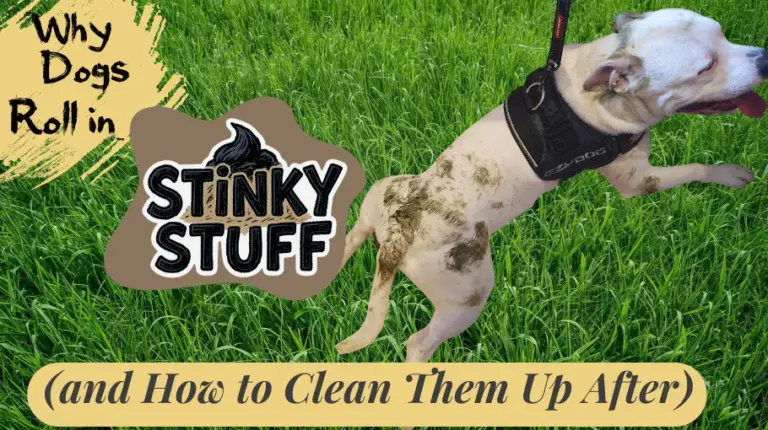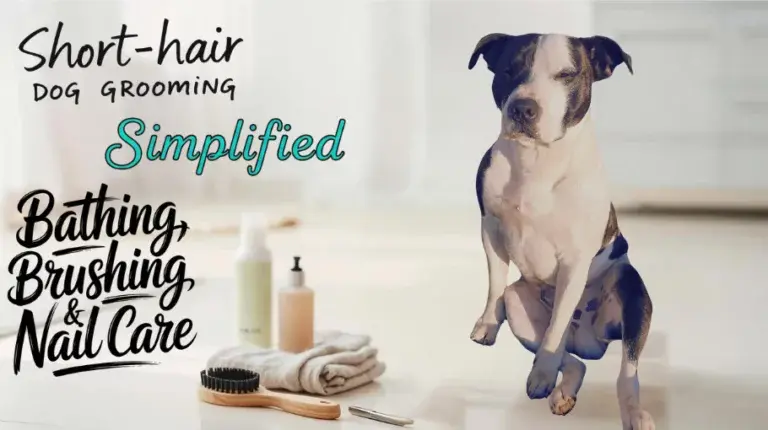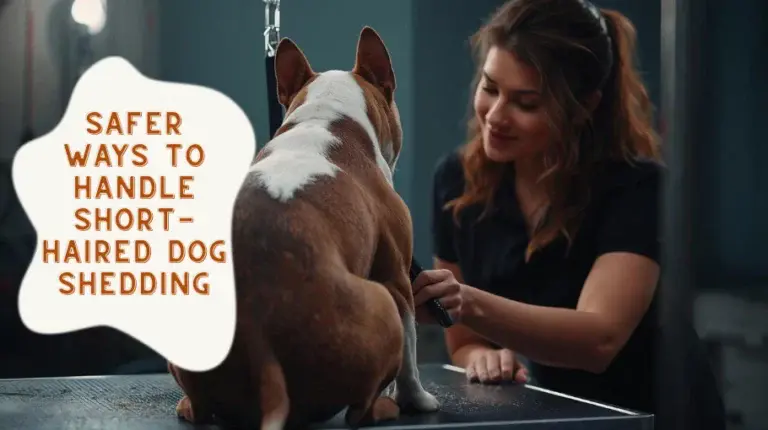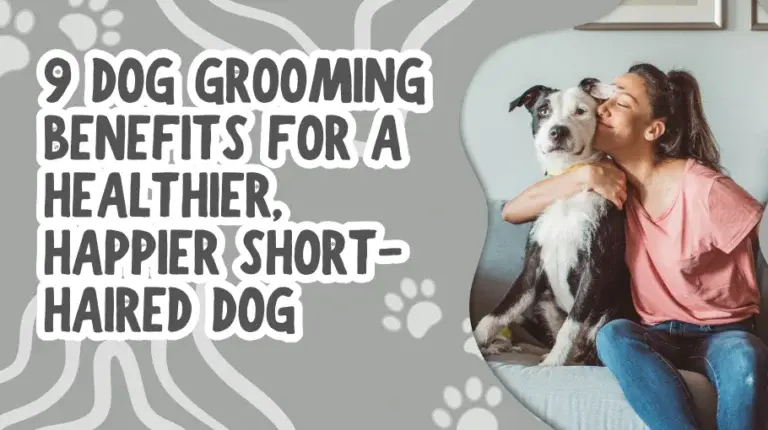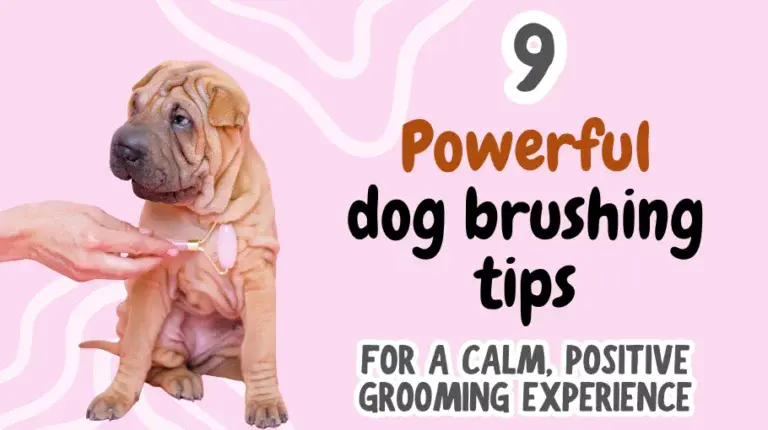Dog Brushes and Shedding: Secrets to a Healthy Coat
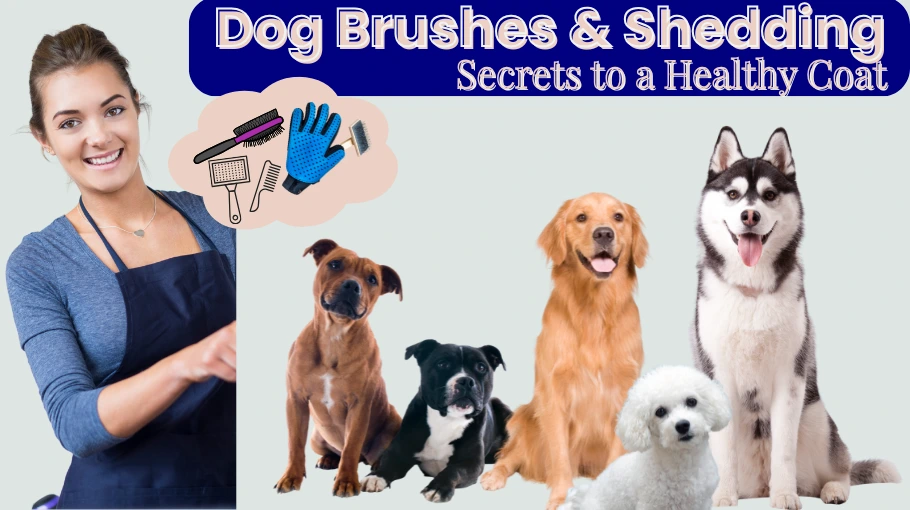
Think you need to brush hairs off your dog to keep on top of the housework? If only it that were that simple. Dog brushes and shedding are linked, but so are a lot of other things that leave dander floating around your home.
Let’s dive down this rabbit hole…
The whole shedding thing starts with understanding that dog hair isn’t just there to drive us nuts with fluff-covered couches. It actually has a purpose—like insulation and protection.
Dogs’ hair grows in a few neat stages: anagen (where the growth magic happens), catagen (the transition bit), telogen (the resting part), and exogen—the bit that gets on your nerves—when the hair finally sheds. That shedding happens to make way for new hair.
There’s also a phase called kenogen, which is essentially a natural resting phase. “Normally, 15–20% of follicles are in this phase and when activated enable dogs to grow more hair at colder times of year”.
In the canine world, there are no haircuts needed; it just falls out and grows back naturally. Think of it as a cycle of growing, pausing, and letting go.
Now, shedding isn’t something dogs do just to mess with your vacuum cleaner. It’s how they replace old or damaged hair, keeping their coats fresh and healthy.
Some dogs shed like it’s a constant thing happening in the background, while for others, it’s like a seasonal event where they lose way more hair than you’d think possible.
Then you gotta consider that each dog breed has its own shedding footprint. You’ve got breeds that sprinkle fur year-round, and then there’s the seasonal shed-fests.
Understanding your dog’s natural rhythm is step one in mastering the art of dog grooming, (and it answers the question of how often should you brush your dog?)
Table of Contents
The Seasons of Shedding: What to Expect and When
You know how some days it feels like there’s more dog hair on your clothes than on your dog? Welcome to shedding seasons. Dogs have shedding trends that sync up with the changing seasons. Just like we swap out our summer tees for cozy sweaters, dogs do a wardrobe switch of their own.
Spring marks a big shift. With warmer weather coming in, dogs ditch that extra winter fuzz to keep cool in the summer. It’s like their version of a spring clean, where furry tufts just keep showing up, transforming your living room into a fur festival.
And when autumn rolls around, get ready for more. Dogs start growing their winter armour, dropping their lighter summer coats in the process. It’s kind of like they’re gearing up for a chilly adventure, even if they only venture as far as the garden.
For you folks with indoor pooches enjoying climate control year-round, you’ll notice their shedding is more of a light, constant sprinkle. They’re not getting those temperature cue changes like their outdoor counterparts, so their bodies play it cool and steady.
Knowing when these shedding bursts will happen lets you plan your grooming missions. It’s all about timing your brushing routine to catch the maximum fluff before it piles up.
When Should You Worry? Signs of Problematic Shedding
So, not all shedding is equal. There’s the usual hair drop that you get used to, and then there’s shedding that might make you ask, ‘Is something up with my dog?’ Here’s how you can tell if your dog’s fur loss is more than just fluff.
- Start by looking for unusual signs.
Bald patches popping up on your dog isn’t normal, and neither is fur that’s thinning out noticeably. If your dog’s coat starts looking patchy like an old rug, that’s your cue to check things out.
- Watch your dog’s behavior, too.
If you catch your dog scratching or licking themselves more than usual, it might be time to consider whether something’s bugging their skin. Constant attention to certain areas can indicate an itch that won’t quit.
- Nutritional Deficiency.
Maybe your dog isn’t getting all the good stuff from their diet they need to keep their coat shiny and strong
- Allergies
An allergy could be from the dog grooming products you’re using on their coat. Sometimes, an unsuitable shampoo could be the culprit, stripping away essential oils.
Or perhaps…
- Uninvited guests like fleas or mites have shown up
This will cause the dog to scratch more, and pull on their coat in an attempt to get the bugs off.
If there’s unusual shedding that seems persistent or if your dog’s skin looks red or flaky, booking a vet appointment is a good move. Better safe than wondering what’s going on.
Analysing Different Dog Coats and Their Shedding Patterns
Dog coats are like the ultimate wardrobe variety—a mix of styles that each come with their shedding quirks. Knowing what type of coat your dog has can seriously up your grooming game.
Smooth and short coats
These dogs shed lightly but consistently year-round. You won’t usually get big hair explosions, but the fur you pick off the couch every day is relentless. Think Staffordshire Bull Terriers, Boxers, Beagles, or Dalmatians — all short-haired breeds that stay relatively low-maintenance but still leave a trace. See our dog grooming guide for short-hair breeds for useful tips to stay on top of things easily.
Medium and long coats
This is a whole different ballgame. These coats shed more visibly and tend to tangle, so regular brushing is a must. Golden Retrievers, Border Collies, Afghan Hounds, and Cocker Spaniels all fit this type — gorgeous coats that need a bit of effort to keep mats away.
Double coats
The overachievers of shedding. Expect heavy hair loss when seasons change. Huskies, German Shepherds, Labradors, and Akitas all sport double coats that fluff up everywhere during peak shed times — regular brushing is a lifesaver.
Curly or wool coats
These pups shed far less — a blessing for anyone who’s tired of vacuuming constantly. But there’s a catch: loose hairs can tangle into mats if you’re not keeping up with brushing. Poodles, Bichon Frises, Portuguese Water Dogs, and Curly-Coated Retrievers are great examples.
Wire coats
Coarse and rugged, these dogs don’t shed as dramatically. They need special care like hand-stripping to stay looking sharp. Think Wire Fox Terriers, Schnauzers, Airedales, and Scottish Terriers.
Combination or mixed coats
…Where hair patterns depend entirely on the breed mix. It’s a wild card, so you’ll need to tailor your grooming routine to whatever nature has cooked up. Labradoodles, Cockapoos, Schnoodles, and any designer or mixed-breed dogs can fall into this category.
Brush Smart: A Guide to Dog Brushes for Effective Shedding Control
Navigating the world of dog brushes can feel a bit like wandering into a home goods store without a shopping list. Knowing which tool works with your dog’s specific coat is half the battle won.
Bristle brushes are the classics. They’re perfect for those surface-level sheds, especially if your dog’s rocking a smooth or short coat. Think of them as the gentle everyday brush that keeps things tidy without drama.
When it comes to loosening up tangles and breaking through the undercoat, slicker brushes are your go-to. They’re great for medium and long-coated dogs who need more than just a light pass-through.
Pin brushes may not be the best for hardcore shedding control, but they’re perfect for maintaining longer hair. They’re gentle and keep those locks looking lush.
If your dog’s got a smooth coat, rubber brushes and dog brush gloves double as a massage tool, lifting loose fur while giving your dog a spa day experience.
For those dealing with double coats, de-shedding tools or rakes dig down and grab what’s ready to fly around your house. Use them carefully though; you don’t want to overdo it and irritate your dog’s skin.
Avoiding Common Mistakes in Dog Brushing
Brushing your dog might seem straightforward, but it’s easy to slip up with some common mistakes. First off, using the wrong type of brush for your dog’s coat can mess things up. Each brush serves a specific purpose and coat type, so matching them is key to efficient grooming.
When it comes to brushing force, less is more. Applying too much pressure can lead to irritated skin and even damaged fur. Be gentle and let the brush do the work—it should be a calming experience, not a battle.
Then there’s the issue of over-brushing. More isn’t always better. Excessive brushing, especially on sensitive areas, can cause red skin and even lead to bald patches. Keep a consistent, moderate routine instead of going overboard.
Using products meant for humans is a big no-no as well. Human shampoos can strip your dog’s coat of its natural oils, which boosts shedding rather than curbing it. Stick to pet-specific products that support healthy skin and fur.
Perhaps the biggest mistake is to leave your dog to manage their coat themselves. They need a help. Even if they play up, running away at the sight of the brush, they need trained to learn it’s normal. If your dog doesn’t appreciate the brushing, we have 9 dog brushing tips that’ll help you transform that behaviour.
Skin Conditions and Shedding: The Connection
Shedding isn’t always about the coat type or changing seasons. Sometimes it’s signaling issues beneath the surface. Skin conditions can mess with a dog’s shedding pattern and make grooming painful.
If your dog’s shedding routine switches to turbo mode or skin starts looking flaky, allergies could be the culprit. Some dogs react to certain grooming products or environmental factors, leading to increased fur loss.
Poor nutrition is another big red flag. If what’s going in doesn’t meet their needs, it can lead to dry, itchy skin and brittle hair. Making sure your pup gets a well-balanced diet loaded with essential nutrients can make all the difference.
Pesky parasites like fleas and mites are also notorious for wreaking havoc on a dog’s coat. When these guys show up, your dog will shed like crazy and might even develop bald patches or redness where they can’t stop scratching.
Sometimes there’s more going on than what meets the eye. Underlying conditions, such as thyroid issues or infections, can increase shedding. Consistent itching and red spots are surefire signs that warrant a vet check-up.
If you’re concerned about a skin condition that could be affecting your dog, have a look at WebMD’s Skin Conditions in Dogs information to learn more about common concerns.
Beyond Conditioning: Additional Benefits of Regular Brushing
There’s a whole host of dog grooming benefits. Brushing isn’t just about reducing the hair around your home—it’s also a bonding moment that’ll make your dog feel like the star of their very own spa day. Regular grooming brings you into your dog’s space in a way that’s calming, building trust and affection between you two.
While you’re getting up close and personal, brushing also helps get your dog’s blood flowing better. The motion stimulates circulation which can keep their skin in top shape, distributing those all-important natural oils that give their coat that healthy gleam.
A nifty bonus? Brushing also dials down the fluff and dander floating around your house, making it easier for everyone, especially allergy sufferers who may drop in for a visit, to breathe easy. It’s a win for your dog and a win for your home.
And hey, brushing isn’t only good for your dog. Taking that time means you’re more likely to catch unusual skin conditions early on, like hot spots or infections. Spotting them before they become bigger issues means you can sort things out before your dog even notices something’s off.
Wrapping It Up: Managing Shedding with Careful Practices
Tackling shedding doesn’t have to be a big chore. With the right approach, you can keep things manageable and stress-free. It starts with matching the brush to your dog’s unique coat type. Once you’ve got the right tools, use them at the best times—especially around those notorious shedding seasons.
Remember, brushing should be a bonding time, not a battle. Focus on being gentle, consistently managing loose hairs without overdoing it. This low-key approach helps avoid discomfort and makes grooming something your dog actually looks forward to.
It’s easy to fall into some common pitfalls, like using the wrong products, but a little knowledge goes a long way toward avoiding these mistakes. Tailor your routine to your dog’s needs, and soon you’ll find a rhythm that maintains their coat while keeping your home neater.
Curious about diving deeper into coat health and grooming tips? Our Skin & Coat Care guides have got you covered with lots more insights. And if you’re a Staffy owner or have any short-haired breeds, be sure to check out our top picks for dog grooming brushes specifically designed for short-haired dogs.
Whether you’re just starting out or looking for ways to refine your routine, there seems to be always something new to learn about making your dog’s coat shine.
FAQs about Dog Brushes and Shedding
Do dogs shed less if you brush them?
Brushing doesn’t stop shedding, but it helps manage loose hair before it ends up all over your home. Regular brushing also keeps your dog’s coat healthy, stimulates the skin, and reduces mats and tangles, which can make shedding more noticeable.
What do groomers do to de-shed dogs?
Professional groomers use specialised brushes, combs, and sometimes deshedding tools like undercoat rakes to remove loose undercoat safely. They may also bathe dogs with coat-appropriate shampoos, hand-strip certain coat types, and ensure brushing is thorough but gentle to avoid skin irritation.
What time of year do dogs shed the most?
Most dogs shed heavily during seasonal coat changes: spring for their winter coat drop and autumn to grow a denser winter coat. Indoor lighting and temperature can shift these patterns slightly, so some dogs shed lightly year-round.

